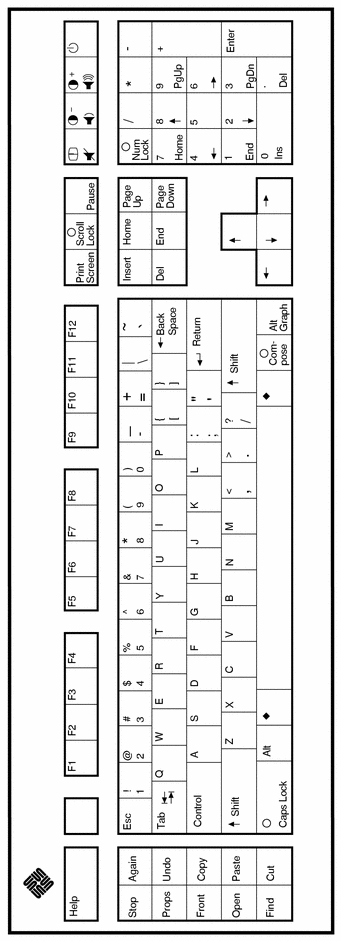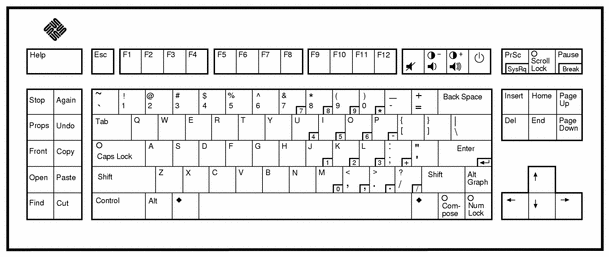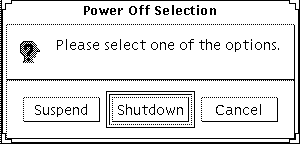Suspending and Resuming Your System Manually
Power Management software includes a timesaving feature, called Suspend-Resume. This feature is used by default through the AutoShutdown and AutoWakeup features of the dtpower program. You also can Suspend and Resume your system whenever you choose by following the procedures in "Suspending Your System" and "Resuming Your System".
The traditional process of powering off your system can be time consuming. Similarly, the process of rebooting and setting up your workspace also can take some time. With the Suspend-Resume feature, you can power off your system and quickly save all your current work-in-process automatically. Then, at the next power on, your workspace quickly returns to the way it was when you last used the system.
You can leave your system suspended and powered off for an indefinite length of time without losing data. However, there are some outside operations (such as receiving mail) that may be affected while your system is suspended. Before you use the Suspend-Resume features, be sure to read "Choosing to Use Power Management".
Note -
The Suspend-Resume feature is not supported on systems configured as diskless clients.
Suspending a system can occur automatically through the AutoShutdown feature in the Power Management software. Also, you can suspend your system manually using the keyboard by following instructions in the next section.
Suspend allows you to do the following without losing the current state of your system:
-
Move your system from one location to another
-
Power off your system to conserve energy
-
Switch the system power source from a battery to the wall outlet (AC power supply) or vice-versa (only on SPARCstation Voyager systems)
Note -
Do not use the Suspend feature if you need to reconfigure your system. You must halt the operating system whenever you want to reconfigure your system.
Before you suspend a system, you must wait for operations such as the following to finish:
Suspending Your System
Initiating a Suspend and a subsequent Resume usually requires less than a minute. You can initiate Suspend in several ways:
-
Use the power key, then respond to a prompt
-
Use the Shift and power keys to Suspend without a further prompt
-
Use the standby switch available on the front of systems such as the Sun Ultra 5 and Sun Ultra 10.
-
Use the CDE desktop Workspace menu
-
Using the OpenWindows desktop Workspace Utilities menu
-
Using the sys-suspend command
To Suspend Your System Using the Keyboard
-
See Figure 3-6 and Figure 3-7 for the location of the power key.
Figure 3-6 Power Key Location: Sun Type 5 Keyboard

Figure 3-7 Power Key Location: Sun Compact 1 Keyboard

After you press the power key, a confirmation window is displayed:
Figure 3-8 Confirmation Window for Power Key

-
Select Suspend in the confirmation window.
Selecting Suspend saves the state of the system to disk, enabling you to return to the current system environment.
Selecting Shutdown syncs the disks to a neutral state and effectively shuts down the operating system. This is equivalent to running the shutdown(1M) command, which changes the system to state 5 without any grace period.
-
Wait for the system to power off.
-
Power off all external devices.
External devices include disk drives, printers, or other serial or parallel peripherals. See the manual supplied with the external device for instructions.
To Immediately Suspend Your System Using the Keyboard
-
Press Shift and the power key at the same time.
See Figure 3-6 or Figure 3-7 for the location of the power key.
-
Wait for the system to power off.
The suspend confirmation window isn't displayed if you use this method.
-
Power off all external devices.
External devices include external disk drives, printers, or other serial or parallel peripherals. See the manual supplied with the external device for instructions.
To Suspend Your System Using the Standby Switch
Some systems, such as the Sun Ultra 5 and Sun Ultra 10, have a standby switch on the front of the system.
-
Press the standby switch while you are in a windowing environment.
If you are not in a windowing environment, pressing the standby switch will immediately shutdown the system. In a windowing environment, the following GUI will appear:
Figure 3-9 Confirmation Window for Standby Switch

-
Select Suspend in the confirmation window.
Selecting Suspend saves the state of the system to disk, enabling you to return to the current system environment.
Selecting Shutdown syncs the disks to a neutral state and effectively shuts down the operating system. This is equivalent to running the shutdown(1M) command, which changes the system to state 5 without any grace period.
In the window for the standby switch, Shutdown is the default. In the similar window that appears when you press the power key, Suspend is the default.
-
Wait for the system to power off.
-
Power off all external devices.
External devices include disk drives, printers, or other serial or parallel peripherals. See the manual supplied with the external device for instructions.
To Suspend Your System Using CDE
-
Place your cursor in the workspace and hold down the menu button.
The Workspace menu is displayed.
-
Select Suspend System from the Workspace menu.
-
Select the Suspend menu option.
The Suspend confirmation window is displayed, as shown in Figure 3-8.
-
Select Suspend in the confirmation window.
-
Wait for the system to power off.
-
Power off all external devices.
External devices include disk drives, printers, or other serial or parallel peripherals. See the manual supplied with the external device for instructions.
To Suspend Your System Using OpenWindows
-
Place your cursor in the workspace and hold down the menu button.
The Workspace menu is displayed.
-
Select Utilities with the menu button.
-
Select the Suspend menu option.
The Suspend confirmation is displayed, as shown in Figure 3-8.
-
Select Suspend.
-
Wait for the system to power off.
-
Power off all external devices.
External devices include disk drives, printers, or other serial or parallel peripherals. See the manual supplied with the external device for instructions.
To Initiate Suspend Using the sys-suspend Command
Note -
You do not need to be running a windowing system, such as OpenWindows or CDE, for the sys-suspend shell command to work, nor do you need to be superuser.
-
example% /usr/openwin/bin/sys-suspend The Suspend confirmation pop-up window is displayed, as shown in Figure 3-8. If a window system is not running, the command executes without displaying the confirmation pop-up window.
-
Click Suspend.
-
Wait for the system to power off.
-
Power off all external units.
External devices include disk drives, printers, or other serial or parallel peripherals. See the manual supplied with the external device for instructions.
Resuming Your System
You can use the following method to manually Resume using a system that had been put into a suspended state by any method.
To Resume a Suspended System
-
Press the power key.
See Figure 3-6 or Figure 3-7 for power key locations.
-
Enter your password to unlock the system.
Whenever the system is suspended, it is automatically locked.
- © 2010, Oracle Corporation and/or its affiliates
